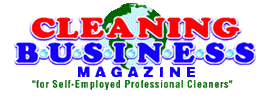How to Bid a Facility Using Only Sustainable Product and Procedures
Forward thinking companies and contractors are adopting sustainable cleaning process and products as the only way of doing business and have found this to be a good operational and marketing strategy. Other companies have taken a wait and see approach and have not been willing to make a commitment to change, especially if it means an increase in costs. There is a large segment of the market, primarily the low-price contractors and customers, who don’t know or don’t care about sustainable cleaning and have no interest in changing the way they do business. Early adopters of sustainable cleaning include health care, education and local and federal government agencies. There are also geographic areas, primarily the West and East Coast states that have more interest in sustainability, with Central and Midwestern states having little or no interest in sustainable products or cleaning.
In the early years, sustainable cleaning and products were provided at premium prices, and in many cases, there are still slightly higher costs involved in the purchase and use of sustainable equipment, products and supplies. The difference in costs has continued to shrink and there is often hidden saving to be found during the implantation process.
The most common approach today is a blended approach, with some, but not all products used in a facility being certified as sustainable. Disinfectants, stripper and floor finish that are effective and sustainable are hard to find in actual use. Even though bio based germ killing products are available, at this point the EPA, FDA and other Federal Agencies that approve and test such products haven’t given them the green light to claim “disinfectant” capabilities in the USA. Sustainable floor finish is available on the market, but most users complain that the products don’t hold up to wear and shine retention like the non-sustainable products they have used in the past.
Bidding Sustainable Cleaning
The cost categories remain the same, you have labor, supplies, chemicals, and equipment, and if you are in business, don’t forget about profit and overhead.
Labor cost remain basically the same, it doesn’t take any longer to use sustainable products or processes when cleaning. You can use standard production rates and sq. ft. costs in your calculations, unless there are tasks or special circumstances that the customer requires that will reduce production rates. Depending on what you are cleaning, an hourly production rate somewhere between 1500 and 7500 sq. ft. per hour is where you’ll be. Yes, that is a wide range and it all boils down to what you are cleaning, what services you are providing and how well the work is engineered and managed.
As for product costs, the percentages remain pretty much the same as other locations you clean, however, to be safe, I’d add 3 – 5% to the cost of supplies, equipment and chemicals to cover the slightly higher cost of sustainable products. Paper products, plastic liners and equipment are normally the items that are costlier that non-sustainable items you purchase. There isn’t good way to bury or hide these increases, so you have to pass them on to the customer, cover the cost out of your overhead and profit or find ways to be more efficient and cover increased costs through labor savings. The best source of accurate costs for price comparison is your local sanitary supply distributor. They know what’s available on them market and have the most current prices available. Don’t guess, get to know these people by calling them for pricing and product information.
Hidden Benefits and Cost Savings
There are often hidden benefits and cost saving attainable when switching over to sustainable cleaning products and processes. Even though you may pay a little more up front, you may be surprised to find that you can reduce costs over time due to savings you were not aware of when you made the switch. Examples could include less time loss injuries and turnover of staff, fewer complaints from customers, less water and chemical use, less dust in the air from vacuums that do a better job of containing soil, and the list goes on if you closely monitor your costs and seriously challenge everyone to find better ways of completing their assigned tasks.
The Future
The train has left the station, in another 10 – 15 years, sustainable cleaning will be the only way cleaning is done. Over time manufacturers will phase out non-sustainable chemicals, products and equipment to reduce risk and liability and to meet market demand for better, safer and more productive ways of cleaning commercial and residential buildings. As costs associated with sustainable cleaning continue to go down, there will be widespread use of engineered and electrically activated water. From an economic stand point, it makes no sense to purchase and ship chemicals if you can create what you need on site. Within the next 5 – 10 years, we will see micro robots handling most of the mopping, sweeping and vacuuming in commercial buildings and homes. Not to worry, it’s not the end of cleaning, it’s actually an entirely new phase of professional development and growth for the cleaning industry.
















